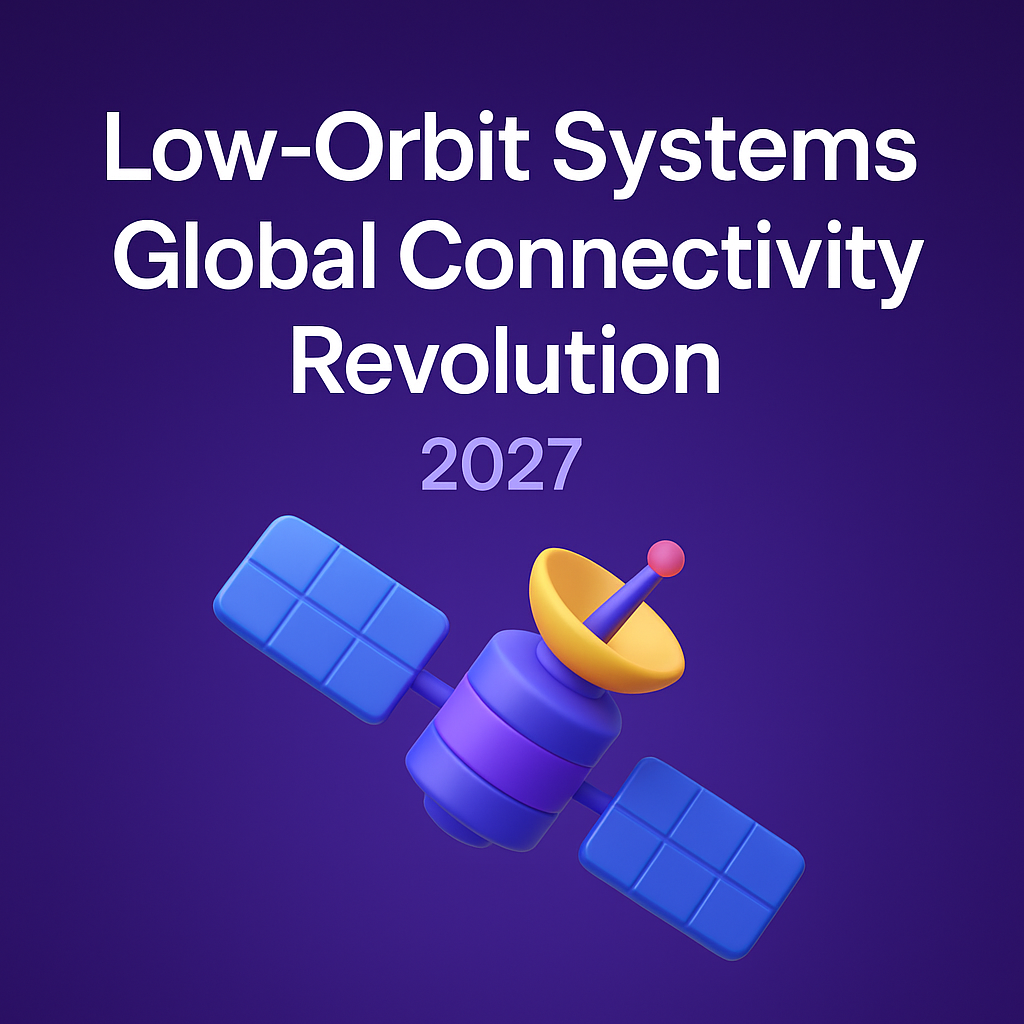Low-Orbit Systems: Global Connectivity Revolution

Low-Orbit Systems: Global Connectivity Revolution
Estimated reading time: 8 minutes
The expansion of low-orbit satellite systems — known as LEO constellations — is reshaping how the world connects. In 2027, Europe is entering a new era of global broadband and IPTV distribution powered by thousands of satellites orbiting just a few hundred kilometers above Earth.
Unlike traditional geostationary satellites positioned 36,000 km away, these new constellations deliver ultra-low latency, high-speed internet that rivals fiber optics — a true revolution for remote connectivity and live broadcasting.
🛰️ How Low-Orbit Systems Work
Low-Earth Orbit (LEO) satellites move quickly across the sky, forming a continuous coverage grid. Each satellite connects to multiple ground stations and neighboring satellites via laser interlinks, creating a seamless global web of communication.
AI-driven routing ensures uninterrupted transmission — as one satellite moves out of range, another instantly takes over. This overlapping system guarantees constant internet coverage even in the most remote regions.
⚡ The Connectivity Advantage
Latency — the time it takes for a signal to travel — drops from 600 milliseconds (typical of GEO satellites) to under 40 milliseconds with LEO systems. For IPTV and real-time streaming, that difference transforms viewer experience completely.
Networks like Starlink, OneWeb, and Eutelsat LEO are leading this new race, providing high-speed data not only to homes but also to airlines, ships, and mobile networks across Europe and beyond.
🌐 Hybrid Models with IPTV
The integration of low-orbit internet with traditional IPTV systems allows broadcasters to deliver 4K and 8K streams to regions previously unreachable by terrestrial networks. LEO connectivity supports cloud-based video platforms, ensuring stable streams without buffering.
Some IPTV services are already testing multi-orbit switching, where the system automatically selects between LEO and GEO satellites for the best possible quality and latency balance.
🟨 Reality Check
While LEO constellations are groundbreaking, they come with challenges. The need for thousands of satellites raises space debris concerns and increases maintenance costs. Ground terminals also require advanced tracking systems to stay connected as satellites move rapidly.
Despite these issues, the cost of production and launch continues to decrease, making widespread LEO access inevitable by the end of the decade.
🌍 The Global Revolution Ahead
By 2028, low-orbit systems will serve as the backbone of global broadband infrastructure. Every major satellite operator is now investing in AI-driven traffic management to merge satellite and terrestrial networks into a single intelligent grid.
This breakthrough ensures that high-speed, low-latency communication will no longer be limited by geography — a true step toward universal digital inclusion.
🟥 Final Verdict
Low-Orbit Systems 2027 mark the biggest leap in global connectivity since the invention of fiber optics. With faster speeds, lower latency, and universal reach, LEO satellites are set to redefine how IPTV and streaming services operate worldwide.
The sky is no longer the limit — it’s the network itself.






